113 papers:
 ICALP-v2-2015-AchlioptasS #graph #independence #symmetry
ICALP-v2-2015-AchlioptasS #graph #independence #symmetry- Symmetric Graph Properties Have Independent Edges (DA, PS), pp. 467–478.
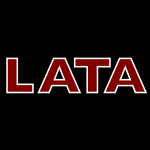 LATA-2015-AmanoS #bound #multi #polynomial
LATA-2015-AmanoS #bound #multi #polynomial- A Nonuniform Circuit Class with Multilayer of Threshold Gates Having Super Quasi Polynomial Size Lower Bounds Against NEXP (KA, AS), pp. 461–472.
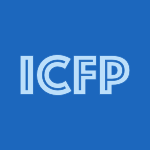 ICFP-2015-SchererR #question
ICFP-2015-SchererR #question- Which simple types have a unique inhabitant? (GS, DR), pp. 243–255.
 CSCW-2015-HindsRC
CSCW-2015-HindsRC- In the Flow, Being Heard, and Having Opportunities: Sources of Power and Power Dynamics in Global Teams (PJH, DR, CDC), pp. 864–875.
 HCI-DE-2015-BevanCH #question #usability #what
HCI-DE-2015-BevanCH #question #usability #what- ISO 9241-11 Revised: What Have We Learnt About Usability Since 1998? (NB, JC, SH), pp. 143–151.
 KDD-2015-Koller #named #question #what
KDD-2015-Koller #named #question #what- MOOCS: What Have We Learned? (DK), p. 3.
 SEKE-2015-MatturroFR #agile #bibliography
SEKE-2015-MatturroFR #agile #bibliography- Soft Skills in Scrum Teams. A survey of the most valued to have by Product Owners and Scrum Masters (GM, CF, FR), pp. 42–45.
 ECMFA-2015-DiskinMC #category theory #imperative #model management #visual notation
ECMFA-2015-DiskinMC #category theory #imperative #model management #visual notation- A Model Management Imperative: Being Graphical Is Not Sufficient, You Have to Be Categorical (ZD, TSEM, KC), pp. 154–170.
 SAC-2015-SakuraiM #debugging #object-oriented #source code
SAC-2015-SakuraiM #debugging #object-oriented #source code- The omission finder for debugging what-should-have-happened bugs in object-oriented programs (KS, HM), pp. 1962–1969.
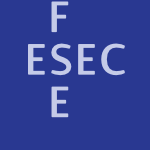 ESEC-FSE-2015-XuJFZPT #comprehension #exclamation
ESEC-FSE-2015-XuJFZPT #comprehension #exclamation- Hey, you have given me too many knobs!: understanding and dealing with over-designed configuration in system software (TX, LJ, XF, YZ, SP, RT), pp. 307–319.
 ICSE-v1-2015-NistorCRL #detection #named #performance #problem
ICSE-v1-2015-NistorCRL #detection #named #performance #problem- CARAMEL: Detecting and Fixing Performance Problems That Have Non-Intrusive Fixes (AN, PCC, CR, SL), pp. 902–912.
 CHI-2014-HaimsonBH #online
CHI-2014-HaimsonBH #online- DDFSeeks same: sexual health-related language in online personal ads for men who have sex with men (OLH, JRB, GRH), pp. 1615–1624.
 DUXU-ELAS-2014-MontAlvao #bibliography #health #using
DUXU-ELAS-2014-MontAlvao #bibliography #health #using- Health Care Professionals vs Other Professionals: Do They Have Different Perceptions about Health Care Waste and Dangerous Products Pictograms? Some Findings Using a Digital Device in Field Survey (CRM), pp. 83–90.
 CIKM-2014-QuattroneNKT #what
CIKM-2014-QuattroneNKT #what- Tell Me What You Want and I Will Tell Others Where You Have Been (AQ, EN, LK, ET), pp. 1783–1786.
 SAC-2014-RockiBS #abstraction #future of #performance #programming #question
SAC-2014-RockiBS #abstraction #future of #performance #programming #question- The future of accelerator programming: abstraction, performance or can we have both? (KR, MB, RS), pp. 886–895.
 ITiCSE-2013-Liew #student
ITiCSE-2013-Liew #student- Benefits of having students develop software for other departments (CWL), p. 348.
 CHI-2013-RauARR #design #interactive #learning #why
CHI-2013-RauARR #design #interactive #learning #why- Why interactive learning environments can have it all: resolving design conflicts between competing goals (MAR, VA, NR, SR), pp. 109–118.
 DHM-SET-2013-Lueder #how
DHM-SET-2013-Lueder #how- How Could This Have Happened? Unintentional Injuries of Young Children at Home (RL), pp. 348–354.
 HIMI-D-2013-LoiaconoL #comprehension #congruence #image
HIMI-D-2013-LoiaconoL #comprehension #congruence #image- Understanding the Impact Congruent Images and News Articles Have on Mood and Attitude (ETL, ML), pp. 628–634.
 SAC-2013-SpreitzenbarthFESH #android #named
SAC-2013-SpreitzenbarthFESH #android #named- Mobile-sandbox: having a deeper look into android applications (MS, FCF, FE, TS, JH), pp. 1808–1815.
 SOSP-2013-ElphinstoneH #kernel #question #what
SOSP-2013-ElphinstoneH #kernel #question #what- From L3 to seL4 what have we learnt in 20 years of L4 microkernels? (KE, GH), pp. 133–150.
 CHI-2012-HayashiRNTRP #named
CHI-2012-HayashiRNTRP #named- TimeBlocks: mom, can I have another block of time (EH, MAR, ZHN, NT, SR, EP), pp. 1713–1716.
 CIKM-2012-DinhST #network #online #privacy #social
CIKM-2012-DinhST #network #online #privacy #social- The walls have ears: optimize sharing for visibility and privacy in online social networks (TND, YS, MTT), pp. 1452–1461.
 SEKE-2012-DoranCG #api #how #network #privacy #social
SEKE-2012-DoranCG #api #how #network #privacy #social- How Social Network APIs Have Ended the Age of Privacy (DD, SC, SSG), pp. 400–405.
 SAC-2012-Zaytsev #bnf #what
SAC-2012-Zaytsev #bnf #what- BNF was here: what have we done about the unnecessary diversity of notation for syntactic definitions (VZ), pp. 1910–1915.
 ICSE-2012-Braithwaite #how #industrial #programming #what
ICSE-2012-Braithwaite #how #industrial #programming #what- Software as an engineering material: How the affordances of programming have changed and what to do about it (Invited industrial talk) (KB), p. 998.
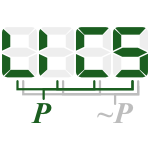 LICS-2012-BartoKW #bound #constraints
LICS-2012-BartoKW #bound #constraints- Near Unanimity Constraints Have Bounded Pathwidth Duality (LB, MK, RW), pp. 125–134.
 DLT-2011-BonizzoniJ #constant
DLT-2011-BonizzoniJ #constant- Regular Splicing Languages Must Have a Constant (PB, NJ), pp. 82–92.
 ICALP-v1-2011-JansenS #constant #polynomial
ICALP-v1-2011-JansenS #constant #polynomial- Permanent Does Not Have Succinct Polynomial Size Arithmetic Circuits of Constant Depth (MJJ, RS), pp. 724–735.
 ICALP-v2-2011-Clemente #automaton
ICALP-v2-2011-Clemente #automaton- Büchi Automata Can Have Smaller Quotients (LC), pp. 258–270.
 CHI-2011-LeeT #mobile #quote #social
CHI-2011-LeeT #mobile #quote #social- “Now, I have a body”: uses and social norms for mobile remote presence in the workplace (MKL, LT), pp. 33–42.
 CHI-2011-LeshedS #case study #experience #quote #tool support
CHI-2011-LeshedS #case study #experience #quote #tool support- “I lie to myself that I have freedom in my own schedule”: productivity tools and experiences of busyness (GL, PS), pp. 905–914.
 CSCW-2011-MinamikawaY #estimation #what
CSCW-2011-MinamikawaY #estimation #what- Blog tells what kind of personality you have: egogram estimation from Japanese weblog (AM, HY), pp. 217–220.
 CSCW-2011-NewmanLMRM #challenge #facebook #health #network #online #problem #social #using
CSCW-2011-NewmanLMRM #challenge #facebook #health #network #online #problem #social #using- It’s not that I don’t have problems, I’m just not putting them on facebook: challenges and opportunities in using online social networks for health (MWN, DL, SAM, PR, MEM), pp. 341–350.
 IDGD-2011-LeeY #education #web
IDGD-2011-LeeY #education #web- Does Internationalization Have Its Own Face in Each Country? Measuring the Internationalization of Web Presence on Higher Education Admission Web Pages between USA and Taiwan (JL, MY), pp. 524–532.
 ICEIS-v1-2011-NiknafsSRR #analysis #comparative #predict
ICEIS-v1-2011-NiknafsSRR #analysis #comparative #predict- Comparative Analysis of Three Techniques for Predictions in Time Series Having Repetitive Patterns (AN, BS, MMR, GR), pp. 177–182.
 ICEIS-v4-2011-WangX #empirical #multi #performance
ICEIS-v4-2011-WangX #empirical #multi #performance- Is Internal Capital Market of China Listed Companies Efficient? — Empirical Evidences from Listed Companies Which Have Multiple Divisions in H-stock (FW, ZX), pp. 600–605.
 DAC-2010-KuehlmannCCCGGLS #design #in the cloud #question
DAC-2010-KuehlmannCCCGGLS #design #in the cloud #question- Does IC design have a future in the clouds? (AK, RC, JC, JC, SG, RG, PL, DS), pp. 412–414.
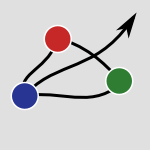 HT-2010-Dillon
HT-2010-Dillon- As we may have thought, and may (still) think (AD), pp. 1–2.
 CHI-2010-QuinnT #effectiveness #independence #performance #usability
CHI-2010-QuinnT #effectiveness #independence #performance #usability- Attractive phones don’t have to work better: independent effects of attractiveness, effectiveness, and efficiency on perceived usability (JMQ, TQT), pp. 353–362.
 CSCW-2010-CarterD #question
CSCW-2010-CarterD #question- Are you having difficulty? (JC, PD), pp. 211–214.
 SIGAda-2010-FongBLGWMW
SIGAda-2010-FongBLGWMW- Wouldn’t it be nice to have software labels (EF, PEB, RFL, SG, LW, GM, JW), pp. 31–32.
 SAC-2010-LesnerBBB #detection #exclamation #framework #novel #source code #student
SAC-2010-LesnerBBB #detection #exclamation #framework #novel #source code #student- A novel framework to detect source code plagiarism: now, students have to work for real! (BL, RB, CB, GB), pp. 57–58.
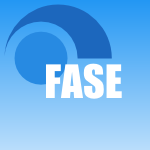 FASE-2009-ChenWYS #detection #named #static analysis
FASE-2009-ChenWYS #detection #named #static analysis- HAVE: Detecting Atomicity Violations via Integrated Dynamic and Static Analysis (QC, LW, ZY, SDS), pp. 425–439.
 DLT-2009-RestivoR #word
DLT-2009-RestivoR #word- Balanced Words Having Simple Burrows-Wheeler Transform (AR, GR), pp. 431–442.
 HCD-2009-BaileyWNK #metric #testing #usability
HCD-2009-BaileyWNK #metric #testing #usability- Performance-Based Usability Testing: Metrics That Have the Greatest Impact for Improving a System’s Usability (RWB, CAW, JN, SK), pp. 3–12.
 TAP-2009-Gladisch #contract #invariant #question
TAP-2009-Gladisch #contract #invariant #question- Could We Have Chosen a Better Loop Invariant or Method Contract? (CG), pp. 74–89.
 CSEET-2008-Mead #education #how #re-engineering
CSEET-2008-Mead #education #how #re-engineering- Software Engineering Education: How Far We’ve Come and How Far We Have to Go (NRM), pp. 18–22.
 SIGAda-2008-Tokar #question #years after
SIGAda-2008-Tokar #question #years after- 30 years after steelman, does DoD still have a software crisis? (JT), pp. 9–10.
 ICPR-2008-UdeA #perspective #recognition
ICPR-2008-UdeA #perspective #recognition- Control and recognition on a humanoid head with cameras having different field of view (AU, TA), pp. 1–4.
 KR-2008-SchroderP #how #logic #strict
KR-2008-SchroderP #how #logic #strict- How Many Toes Do I Have? Parthood and Number Restrictions in Description Logics (LS, DP), pp. 307–317.
 SIGIR-2008-McNameeNM
SIGIR-2008-McNameeNM- Don’t have a stemmer?: be un+concern+ed (PM, CKN, JM), pp. 813–814.
 ICMT-2008-SiikarlaLSS #rest
ICMT-2008-SiikarlaLSS #rest- Transformations Have to be Developed ReST Assured (MS, ML, PS, TS), pp. 1–15.
 SAC-2008-PetrilloPTD #bibliography #development #game studies #problem
SAC-2008-PetrilloPTD #bibliography #development #game studies #problem- Houston, we have a problem...: a survey of actual problems in computer games development (FP, MSP, FMT, CD), pp. 707–711.
 HT-2007-schraefel #question #semantics #web #what #why
HT-2007-schraefel #question #semantics #web #what #why- What is an analogue for the semantic web and why is having one important? (MMCS), pp. 123–132.
 VLDB-2007-Amer-YahiaH #database #question #web #what
VLDB-2007-Amer-YahiaH #database #question #web #what- What does Web 2.0 have to do with databases? (SAY, AYH), p. 1443.
 ITiCSE-2007-Kuyl #question
ITiCSE-2007-Kuyl #question- Where have all the computer scientists gone? (CvdK), p. 2.
 LATA-2007-Thorne #bound #finite
LATA-2007-Thorne #bound #finite- Categorial Module Grammars of Bounded Size have Finite Bounded Density (CT), pp. 577–588.
 CHI-2007-LindgaardC #question #testing #usability #what
CHI-2007-LindgaardC #question #testing #usability #what- Usability testing: what have we overlooked? (GL, JC), pp. 1415–1424.
 HIMI-IIE-2007-Quraishy #case study #design #health #how #implementation #information management
HIMI-IIE-2007-Quraishy #case study #design #health #how #implementation #information management- How Participation at Different Hierarchical Levels Can Have an Impact on the Design and Implementation of Health Information Systems at the Grass Root Level — A Case Study from India (ZBQ), pp. 128–136.
 SEKE-2007-AlencarWSF #deployment #game studies #information management #question
SEKE-2007-AlencarWSF #deployment #game studies #information management #question- Do Neural-Network Question-Answering Systems Have a Role to Play in the Deployment of Real World Information Systems? (AJA, RCW, EAS, ALF), pp. 386–391.
 ICSE-2007-PistoiaFFY #enterprise #modelling #policy #security #validation
ICSE-2007-PistoiaFFY #enterprise #modelling #policy #security #validation- When Role Models Have Flaws: Static Validation of Enterprise Security Policies (MP, SJF, RJF, EY), pp. 478–488.
 ICLP-2007-Nguyen #approximate #complexity #knowledge base #logic
ICLP-2007-Nguyen #approximate #complexity #knowledge base #logic- Approximating Horn Knowledge Bases in Regular Description Logics to Have PTIME Data Complexity (LAN), pp. 438–439.
 CBSE-2006-JaloteMP #component
CBSE-2006-JaloteMP #component- Components Have Test Buddies (PJ, RM, TAP), pp. 310–319.
 CHI-2006-KayeVADDORP
CHI-2006-KayeVADDORP- To have and to hold: exploring the personal archive (JK, JV, SA, AD, SD, LO, IR, TP), pp. 275–284.
 ICEIS-DISI-2006-Liptrott #question
ICEIS-DISI-2006-Liptrott #question- Perhaps a Recipe for Change? — Will E-Voting have the Desired Effect? (ML), pp. 232–238.
 RE-2006-EbertB #question
RE-2006-EbertB #question- Have You Spoken to Your Product Manager Recently? (CE, SB), p. 322.
 ICSE-2006-MikulovicH #communication #development #distributed #how #quote #requirements #what
ICSE-2006-MikulovicH #communication #development #distributed #how #quote #requirements #what- “How do I know what I have to do?”: the role of the inquiry culture in requirements communication for distributed software development projects (VM, MH), pp. 921–925.
 MLDM-2005-Boulle #category theory #scalability
MLDM-2005-Boulle #category theory #scalability- A Grouping Method for Categorical Attributes Having Very Large Number of Values (MB), pp. 228–242.
 DATE-DF-2004-Thiel #validation
DATE-DF-2004-Thiel #validation- Have I Really Met Timing? — Validating PrimeTime Timing Reports with Spice (TT), pp. 114–119.
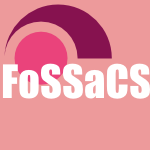 FoSSaCS-2004-Meyer #on the #term rewriting
FoSSaCS-2004-Meyer #on the #term rewriting- On Term Rewriting Systems Having a Rational Derivation (AM), pp. 378–392.
 ICALP-2004-Hofmann #logic #question #type system #what
ICALP-2004-Hofmann #logic #question #type system #what- What Do Program Logics and Type Systems Have in Common? (MH0), pp. 4–7.
 ICEIS-v4-2003-Mukherjee #framework #integration #object-oriented
ICEIS-v4-2003-Mukherjee #framework #integration #object-oriented- Integration of Object-Oriented Frameworks Having IDL and RPC-Based Communications (DM), pp. 455–459.
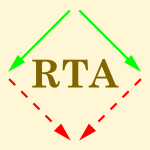 RTA-2003-Geser #string #termination
RTA-2003-Geser #string #termination- Termination of String Rewriting Rules That Have One Pair of Overlaps (AG), pp. 410–423.
 DAC-2002-AloulSS #how #named #question
DAC-2002-AloulSS #how #named #question- Satometer: how much have we searched? (FAA, BDS, KAS), pp. 737–742.
 ICALP-2002-Colcombet #decidability #first-order #graph #on the #product line #reachability
ICALP-2002-Colcombet #decidability #first-order #graph #on the #product line #reachability- On Families of Graphs Having a Decidable First Order Theory with Reachability (TC), pp. 98–109.
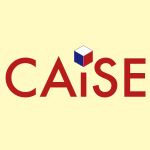 CAiSE-2002-PontieriUZ #approach #data flow #integration
CAiSE-2002-PontieriUZ #approach #data flow #integration- An Approach for Synergically Carrying out Intensional and Extensional Integration of Data Sources Having Different Formats (LP, DU, EZ), pp. 752–756.
 ICSM-2001-SiyV #question
ICSM-2001-SiyV #question- Does the Modern Code Inspection Have Value? (HPS, LGV), p. 281–?.
 ITiCSE-2000-Gerhardt-Powals
ITiCSE-2000-Gerhardt-Powals- Have a great lab without needing roller skates (JGP), p. 182.
 ITiCSE-2000-HaganM #experience #programming #question
ITiCSE-2000-HaganM #experience #programming #question- Does it help to have some programming experience before beginning a computing degree program? (DH, SM), pp. 25–28.
 FoSSaCS-2000-Caucal #on the #term rewriting #word
FoSSaCS-2000-Caucal #on the #term rewriting #word- On Word Rewriting Systems Having a Rational Derivation (DC), pp. 48–62.
 POPL-2000-Bawden #metaprogramming
POPL-2000-Bawden #metaprogramming- First-Class Macros have Types (AB), pp. 133–141.
 ICRE-2000-Gause #question #requirements #what
ICRE-2000-Gause #question #requirements #what- Requirements Engineering: What Have We Accomplished? Where Are We Now? Where Are We Going? (DCG), pp. 195–196.
 HT-1999-HardmanOMRB #composition #hypermedia
HT-1999-HardmanOMRB #composition #hypermedia- Do you have the Time? Composition and Linking in Time-Based Hypermedia (LH, JvO, KSM, LR, DCAB), pp. 189–196.
 VLDB-1999-CareyCNVDRSM #question #what
VLDB-1999-CareyCNVDRSM #question #what- O-O, What Have They Done to DB2? (MJC, DDC, SN, BV, DD, SR, RS, NMM), pp. 542–553.
 HCI-EI-1999-DzidaF #documentation #prototype #question
HCI-EI-1999-DzidaF #documentation #prototype #question- Documentation of Prototypes in Terms of Use Scenarios: Nice to Have or Indispensable? (WD, RF), pp. 905–908.
 HCI-EI-1999-MarcusAFG #design #matter
HCI-EI-1999-MarcusAFG #design #matter- You don’t have to be Jewish to Design Bagel.com, but it Helps... and Other Matters (AM, JA, VF, EG), pp. 516–520.
 ICEIS-1999-JarvisSMMC #adaptation #what #workflow
ICEIS-1999-JarvisSMMC #adaptation #what #workflow- What Right Do You Have To Do That?-Infusing Adaptive Workflow Technology with Knowledfe about the Organisational and Autority Context of a Task (PJ, JS, AM, JPM, PWHC), pp. 240–247.
 TOOLS-EUROPE-1999-Roubine #repository
TOOLS-EUROPE-1999-Roubine #repository- Two or Three Things I Have Learnt about Repositories (OR), p. 7.
 FASE-1998-Jones #what
FASE-1998-Jones #what- Some Mistakes I Have and What I Have Learned from Them (CBJ), pp. 7–20.
 HT-1997-NurnbergLS
HT-1997-NurnbergLS- As We Should Have Thought (PJN, JJL, ERS), pp. 96–101.
 VLDB-1997-SellisRF #data access #multi
VLDB-1997-SellisRF #data access #multi- Multidimensional Access Methods: Trees Have Grown Everywhere (TKS, NR, CF), pp. 13–14.
 SOSP-1997-AndersonBDGHLSVWW #profiling #question
SOSP-1997-AndersonBDGHLSVWW #profiling #question- Continuous Profiling: Where Have All the Cycles Gone? (JAMA, LMB, JD, SG, MRH, STL, RLS, MTV, CAW, WEW), pp. 1–14.
 ICALP-1996-Caucal #decidability #graph #infinity #monad #on the
ICALP-1996-Caucal #decidability #graph #infinity #monad #on the- On Infinite Transition Graphs Having a Decidable Monadic Theory (DC), pp. 194–205.
 CAiSE-1996-SiauWB #bias #modelling
CAiSE-1996-SiauWB #bias #modelling- When Parents Need Not Have Children — Cognitive Biases in Information Modeling (KS, YW, IB), pp. 402–420.
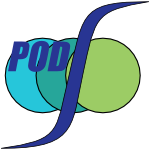 PODS-1995-StoloboushkinT #effectiveness #finite #query #syntax
PODS-1995-StoloboushkinT #effectiveness #finite #query #syntax- Finite Queries do not Have Effective Syntax (APS, MAT), pp. 277–285.
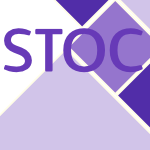 STOC-1995-GoldmannH
STOC-1995-GoldmannH- Monotone circuits for connectivity have depth (log n)2-o(1) (Extended Abstract) (MG, JH), pp. 569–574.
 ICALP-1995-KoblerW
ICALP-1995-KoblerW- New Collapse Consequences of NP Having Small Circuits (JK, OW), pp. 196–207.
 ICALP-1995-NikoletseasRSY #graph #memory management #probability
ICALP-1995-NikoletseasRSY #graph #memory management #probability- Stochastic Graphs Have Short Memory: Fully Dynamic Connectivity in Poly-Log Expected Time (SEN, JHR, PGS, MY), pp. 159–170.
 CSM-1993-Caldiera #maintenance #standard #what
CSM-1993-Caldiera #maintenance #standard #what- Standards for Software Maintenance — What We Have and What We Need (GC), p. 103.
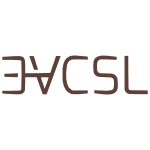 CSL-1992-BerarducciB #normalisation #self #λ-calculus
CSL-1992-BerarducciB #normalisation #self #λ-calculus- A Self-Interpreter of λ Calculus Having a Normal Form (AB, CB), pp. 85–99.
 SEI-1991-RiedlWFKM #re-engineering #what
SEI-1991-RiedlWFKM #re-engineering #what- What We Have Learned About Software Engineering Expertise (TRR, JSW, JTF, GAK, JDM), pp. 261–270.
 ICALP-1990-Malecki #polymorphism
ICALP-1990-Malecki #polymorphism- Generic Terms Having No Polymorphic Types (SM), pp. 46–59.
 DAC-1989-Chowdhury #design #graph #network #reliability
DAC-1989-Chowdhury #design #graph #network #reliability- Optimum Design of Reliable IC Power Networks Having General Graph Topologies (SC), pp. 787–790.
 DAC-1988-Diss #compilation
DAC-1988-Diss #compilation- Circuit Compilers don’t have to be Slow (WCD), pp. 622–627.
 STOC-1988-Ko
STOC-1988-Ko- Relativized Polynominal Time Hierarchies Having Exactly K Levels (KIK), pp. 245–253.
 LFP-1988-Martini #bound #modelling #quantifier
LFP-1988-Martini #bound #modelling #quantifier- Bounded Quantifiers Have Interval Models (SM), pp. 164–173.
 ECOOP-1988-MadsenM #object-oriented #programming #what
ECOOP-1988-MadsenM #object-oriented #programming #what- What Object-Oriented Programming May Be — and What It Does Not Have To Be (OLM, BMP), pp. 1–20.
 VLDB-1987-Bultzingsloewen #optimisation #query #sql
VLDB-1987-Bultzingsloewen #optimisation #query #sql- Translating and Optimizing SQL Queries Having Aggregates (GvB), pp. 235–243.
 ICALP-1985-Johnson #equivalence #question
ICALP-1985-Johnson #equivalence #question- Do Rational Equivalence Relations have Regular Cross-Sections? (JHJ), pp. 300–309.
 POPL-1985-MitchellP #data type
POPL-1985-MitchellP #data type- Abstract Types Have Existential Type (JCM, GDP), pp. 37–51.
 STOC-1983-KanellakisCV #dependence #polynomial #problem
STOC-1983-KanellakisCV #dependence #polynomial #problem- Unary Inclusion Dependencies have Polynomial Time Inference Problems (Extended Abstract) (PCK, SSC, MYV), pp. 264–277.
 ICALP-1974-FlajoletS #on the #set
ICALP-1974-FlajoletS #on the #set- On Sets Having Only Hard Subsets (PF, JMS), pp. 446–457.
 ICALP-v2-2015-AchlioptasS #graph #independence #symmetry
ICALP-v2-2015-AchlioptasS #graph #independence #symmetry LATA-2015-AmanoS #bound #multi #polynomial
LATA-2015-AmanoS #bound #multi #polynomial ICFP-2015-SchererR #question
ICFP-2015-SchererR #question CSCW-2015-HindsRC
CSCW-2015-HindsRC HCI-DE-2015-BevanCH #question #usability #what
HCI-DE-2015-BevanCH #question #usability #what KDD-2015-Koller #named #question #what
KDD-2015-Koller #named #question #what SEKE-2015-MatturroFR #agile #bibliography
SEKE-2015-MatturroFR #agile #bibliography ECMFA-2015-DiskinMC #category theory #imperative #model management #visual notation
ECMFA-2015-DiskinMC #category theory #imperative #model management #visual notation SAC-2015-SakuraiM #debugging #object-oriented #source code
SAC-2015-SakuraiM #debugging #object-oriented #source code ESEC-FSE-2015-XuJFZPT #comprehension #exclamation
ESEC-FSE-2015-XuJFZPT #comprehension #exclamation ICSE-v1-2015-NistorCRL #detection #named #performance #problem
ICSE-v1-2015-NistorCRL #detection #named #performance #problem CHI-2014-HaimsonBH #online
CHI-2014-HaimsonBH #online DUXU-ELAS-2014-MontAlvao #bibliography #health #using
DUXU-ELAS-2014-MontAlvao #bibliography #health #using CIKM-2014-QuattroneNKT #what
CIKM-2014-QuattroneNKT #what SAC-2014-RockiBS #abstraction #future of #performance #programming #question
SAC-2014-RockiBS #abstraction #future of #performance #programming #question ITiCSE-2013-Liew #student
ITiCSE-2013-Liew #student CHI-2013-RauARR #design #interactive #learning #why
CHI-2013-RauARR #design #interactive #learning #why DHM-SET-2013-Lueder #how
DHM-SET-2013-Lueder #how HIMI-D-2013-LoiaconoL #comprehension #congruence #image
HIMI-D-2013-LoiaconoL #comprehension #congruence #image SAC-2013-SpreitzenbarthFESH #android #named
SAC-2013-SpreitzenbarthFESH #android #named SOSP-2013-ElphinstoneH #kernel #question #what
SOSP-2013-ElphinstoneH #kernel #question #what CHI-2012-HayashiRNTRP #named
CHI-2012-HayashiRNTRP #named CIKM-2012-DinhST #network #online #privacy #social
CIKM-2012-DinhST #network #online #privacy #social SEKE-2012-DoranCG #api #how #network #privacy #social
SEKE-2012-DoranCG #api #how #network #privacy #social SAC-2012-Zaytsev #bnf #what
SAC-2012-Zaytsev #bnf #what ICSE-2012-Braithwaite #how #industrial #programming #what
ICSE-2012-Braithwaite #how #industrial #programming #what LICS-2012-BartoKW #bound #constraints
LICS-2012-BartoKW #bound #constraints DLT-2011-BonizzoniJ #constant
DLT-2011-BonizzoniJ #constant ICALP-v1-2011-JansenS #constant #polynomial
ICALP-v1-2011-JansenS #constant #polynomial ICALP-v2-2011-Clemente #automaton
ICALP-v2-2011-Clemente #automaton CHI-2011-LeeT #mobile #quote #social
CHI-2011-LeeT #mobile #quote #social CHI-2011-LeshedS #case study #experience #quote #tool support
CHI-2011-LeshedS #case study #experience #quote #tool support CSCW-2011-MinamikawaY #estimation #what
CSCW-2011-MinamikawaY #estimation #what CSCW-2011-NewmanLMRM #challenge #facebook #health #network #online #problem #social #using
CSCW-2011-NewmanLMRM #challenge #facebook #health #network #online #problem #social #using IDGD-2011-LeeY #education #web
IDGD-2011-LeeY #education #web ICEIS-v1-2011-NiknafsSRR #analysis #comparative #predict
ICEIS-v1-2011-NiknafsSRR #analysis #comparative #predict ICEIS-v4-2011-WangX #empirical #multi #performance
ICEIS-v4-2011-WangX #empirical #multi #performance DAC-2010-KuehlmannCCCGGLS #design #in the cloud #question
DAC-2010-KuehlmannCCCGGLS #design #in the cloud #question HT-2010-Dillon
HT-2010-Dillon CHI-2010-QuinnT #effectiveness #independence #performance #usability
CHI-2010-QuinnT #effectiveness #independence #performance #usability CSCW-2010-CarterD #question
CSCW-2010-CarterD #question SIGAda-2010-FongBLGWMW
SIGAda-2010-FongBLGWMW SAC-2010-LesnerBBB #detection #exclamation #framework #novel #source code #student
SAC-2010-LesnerBBB #detection #exclamation #framework #novel #source code #student FASE-2009-ChenWYS #detection #named #static analysis
FASE-2009-ChenWYS #detection #named #static analysis DLT-2009-RestivoR #word
DLT-2009-RestivoR #word HCD-2009-BaileyWNK #metric #testing #usability
HCD-2009-BaileyWNK #metric #testing #usability TAP-2009-Gladisch #contract #invariant #question
TAP-2009-Gladisch #contract #invariant #question CSEET-2008-Mead #education #how #re-engineering
CSEET-2008-Mead #education #how #re-engineering SIGAda-2008-Tokar #question #years after
SIGAda-2008-Tokar #question #years after ICPR-2008-UdeA #perspective #recognition
ICPR-2008-UdeA #perspective #recognition KR-2008-SchroderP #how #logic #strict
KR-2008-SchroderP #how #logic #strict SIGIR-2008-McNameeNM
SIGIR-2008-McNameeNM ICMT-2008-SiikarlaLSS #rest
ICMT-2008-SiikarlaLSS #rest SAC-2008-PetrilloPTD #bibliography #development #game studies #problem
SAC-2008-PetrilloPTD #bibliography #development #game studies #problem HT-2007-schraefel #question #semantics #web #what #why
HT-2007-schraefel #question #semantics #web #what #why VLDB-2007-Amer-YahiaH #database #question #web #what
VLDB-2007-Amer-YahiaH #database #question #web #what ITiCSE-2007-Kuyl #question
ITiCSE-2007-Kuyl #question LATA-2007-Thorne #bound #finite
LATA-2007-Thorne #bound #finite CHI-2007-LindgaardC #question #testing #usability #what
CHI-2007-LindgaardC #question #testing #usability #what HIMI-IIE-2007-Quraishy #case study #design #health #how #implementation #information management
HIMI-IIE-2007-Quraishy #case study #design #health #how #implementation #information management SEKE-2007-AlencarWSF #deployment #game studies #information management #question
SEKE-2007-AlencarWSF #deployment #game studies #information management #question ICSE-2007-PistoiaFFY #enterprise #modelling #policy #security #validation
ICSE-2007-PistoiaFFY #enterprise #modelling #policy #security #validation ICLP-2007-Nguyen #approximate #complexity #knowledge base #logic
ICLP-2007-Nguyen #approximate #complexity #knowledge base #logic CBSE-2006-JaloteMP #component
CBSE-2006-JaloteMP #component CHI-2006-KayeVADDORP
CHI-2006-KayeVADDORP ICEIS-DISI-2006-Liptrott #question
ICEIS-DISI-2006-Liptrott #question RE-2006-EbertB #question
RE-2006-EbertB #question ICSE-2006-MikulovicH #communication #development #distributed #how #quote #requirements #what
ICSE-2006-MikulovicH #communication #development #distributed #how #quote #requirements #what MLDM-2005-Boulle #category theory #scalability
MLDM-2005-Boulle #category theory #scalability DATE-DF-2004-Thiel #validation
DATE-DF-2004-Thiel #validation FoSSaCS-2004-Meyer #on the #term rewriting
FoSSaCS-2004-Meyer #on the #term rewriting ICALP-2004-Hofmann #logic #question #type system #what
ICALP-2004-Hofmann #logic #question #type system #what ICEIS-v4-2003-Mukherjee #framework #integration #object-oriented
ICEIS-v4-2003-Mukherjee #framework #integration #object-oriented RTA-2003-Geser #string #termination
RTA-2003-Geser #string #termination DAC-2002-AloulSS #how #named #question
DAC-2002-AloulSS #how #named #question ICALP-2002-Colcombet #decidability #first-order #graph #on the #product line #reachability
ICALP-2002-Colcombet #decidability #first-order #graph #on the #product line #reachability CAiSE-2002-PontieriUZ #approach #data flow #integration
CAiSE-2002-PontieriUZ #approach #data flow #integration ICSM-2001-SiyV #question
ICSM-2001-SiyV #question ITiCSE-2000-Gerhardt-Powals
ITiCSE-2000-Gerhardt-Powals ITiCSE-2000-HaganM #experience #programming #question
ITiCSE-2000-HaganM #experience #programming #question FoSSaCS-2000-Caucal #on the #term rewriting #word
FoSSaCS-2000-Caucal #on the #term rewriting #word POPL-2000-Bawden #metaprogramming
POPL-2000-Bawden #metaprogramming ICRE-2000-Gause #question #requirements #what
ICRE-2000-Gause #question #requirements #what HT-1999-HardmanOMRB #composition #hypermedia
HT-1999-HardmanOMRB #composition #hypermedia VLDB-1999-CareyCNVDRSM #question #what
VLDB-1999-CareyCNVDRSM #question #what HCI-EI-1999-DzidaF #documentation #prototype #question
HCI-EI-1999-DzidaF #documentation #prototype #question HCI-EI-1999-MarcusAFG #design #matter
HCI-EI-1999-MarcusAFG #design #matter ICEIS-1999-JarvisSMMC #adaptation #what #workflow
ICEIS-1999-JarvisSMMC #adaptation #what #workflow TOOLS-EUROPE-1999-Roubine #repository
TOOLS-EUROPE-1999-Roubine #repository FASE-1998-Jones #what
FASE-1998-Jones #what HT-1997-NurnbergLS
HT-1997-NurnbergLS VLDB-1997-SellisRF #data access #multi
VLDB-1997-SellisRF #data access #multi SOSP-1997-AndersonBDGHLSVWW #profiling #question
SOSP-1997-AndersonBDGHLSVWW #profiling #question ICALP-1996-Caucal #decidability #graph #infinity #monad #on the
ICALP-1996-Caucal #decidability #graph #infinity #monad #on the CAiSE-1996-SiauWB #bias #modelling
CAiSE-1996-SiauWB #bias #modelling PODS-1995-StoloboushkinT #effectiveness #finite #query #syntax
PODS-1995-StoloboushkinT #effectiveness #finite #query #syntax STOC-1995-GoldmannH
STOC-1995-GoldmannH ICALP-1995-KoblerW
ICALP-1995-KoblerW ICALP-1995-NikoletseasRSY #graph #memory management #probability
ICALP-1995-NikoletseasRSY #graph #memory management #probability CSM-1993-Caldiera #maintenance #standard #what
CSM-1993-Caldiera #maintenance #standard #what CSL-1992-BerarducciB #normalisation #self #λ-calculus
CSL-1992-BerarducciB #normalisation #self #λ-calculus SEI-1991-RiedlWFKM #re-engineering #what
SEI-1991-RiedlWFKM #re-engineering #what ICALP-1990-Malecki #polymorphism
ICALP-1990-Malecki #polymorphism DAC-1989-Chowdhury #design #graph #network #reliability
DAC-1989-Chowdhury #design #graph #network #reliability DAC-1988-Diss #compilation
DAC-1988-Diss #compilation STOC-1988-Ko
STOC-1988-Ko LFP-1988-Martini #bound #modelling #quantifier
LFP-1988-Martini #bound #modelling #quantifier ECOOP-1988-MadsenM #object-oriented #programming #what
ECOOP-1988-MadsenM #object-oriented #programming #what VLDB-1987-Bultzingsloewen #optimisation #query #sql
VLDB-1987-Bultzingsloewen #optimisation #query #sql ICALP-1985-Johnson #equivalence #question
ICALP-1985-Johnson #equivalence #question POPL-1985-MitchellP #data type
POPL-1985-MitchellP #data type STOC-1983-KanellakisCV #dependence #polynomial #problem
STOC-1983-KanellakisCV #dependence #polynomial #problem ICALP-1974-FlajoletS #on the #set
ICALP-1974-FlajoletS #on the #set









